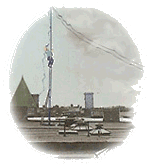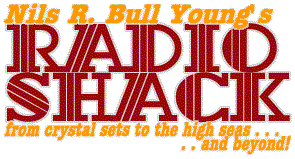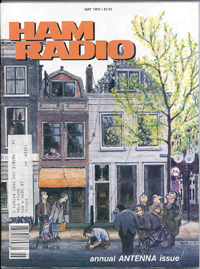
There is a certain literacy that comes with
being involved in ham radio. It's derived from the need to keep up with
what's going on in the hobby. From this literacy many beginning hams learn
about things that others would consider unexciting or dull. Others use
this literacy to find challenges or to consider novel ideas.
One idea that has
been part of ham radio since its early days, one borne almost certainly
of necessity, is low power operations. In the beginning days, everyone
but Marconi was low power. It was just not easy for youngsters and even
adults to find the monetary basis for
a 5 kW spark station. Those who even attempted to reach that level often
did so by collecting the parts or building the neccessary impliments over
extended periods of time.
And over the course of
that same time, the technology would change or the means of transmission
or reception would improve in some way or the other to make low power operation
more successful. And success, one way or the other, was the point. No one
wanted to invest tons of time & money in a hobby that was fraught with
so much frustration and so little profitable experience.
This low power gambit
became the realm of the early hams, men & boys and girls all over the
world who, for some reason or the
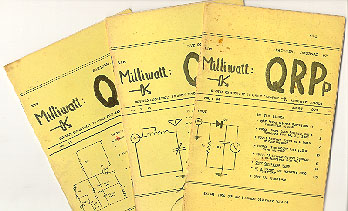
other,
wanted to recreate for free and for fun what Marconi had accomplished with
much more pecuniary goals.
I first learned
about QRP from a little article that appeared in an early edition of the
now-defunct
Ham Radio Magazine. The article mentioned the publication
of another magazine,
The Milliwatt, by a college student in the
central US. The magazine was cheap enough & I subscribed immediately.
What I got for my
money was a very heady introduction to the possibility of using less than
5 W to talk around the world. And the means to do so, even commercially
available stuff, was within easy reach. The adverts for what I needed showed
up often enough in the ARRL "official organ,"
QST.
So I sent for all the stuff . . .
Trying Out a Ten-Tec PM2
Updated 25 July 2004
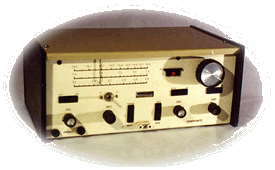
A new company --
at least new to the ham community -- called Ten Tec, founded by Al Kahn
of Electrovoice fame, offered for sale a complete
set of doodads to get someone on the air and quick for a reasonable price.
All the buyer had to do was put up a good antenna and play with the toys.
I got my PM2 around
the end of 1969 and soon enough added the antenna tuner & SWR meter.
This was followed immediately by the KR20 keyer, which allowed me more
than just easy CW. It also improved my code speed, which is another story.
I never got to try
this system out in Puerto Rico -- or probably better said: never had any
success with it there -- because of the limits of my license and the fact
that I didn't have antennas for the bands that the PM2 allowed me to play
on. But when I got transferred from Puerto Rico to the USS Saratoga, I
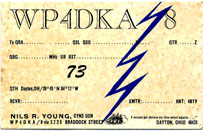
spent a month at home with my parents. There I, discovered just how magically
cool it was to talk to someone in the Central US from my snow-swept digs
in the basement of my parents' home. I was hooked good.
Not that a QSO with a
Swedish ham, after which I discovered that the drive on the transmitter
was all the way down, had anything to do with it.
A couple months
later, home from the Med cruise and back in Dayton for the weekend, I went
to a local military surplus electroncis joint & bought (for $15) a
US Army CW transceiver, complete with built in antenna tuner, that ran
off car batteries. This little box went to my apartment in Florida &
was my sole personal ham radio companion until I got out of the USN in
1972. Over the course of that time, between October of 1971 and March of
'72, I had many
QSOs with people all over the US who were as amazed as I had once been
at what success one could have with just a few Watts of RF and a reasonable
antenna.
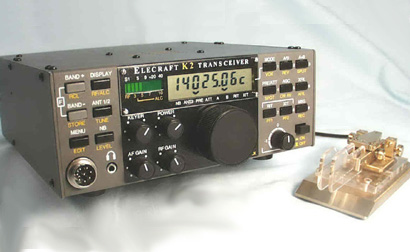
By the time I got
out of the Navy, of course, many parts of the QRP technological gambit
had changed, all in ways that just made me more determined to have as much
fun as I could with the meager post-Navy income that I had. That, of course,
. . .
leads to the next page.
